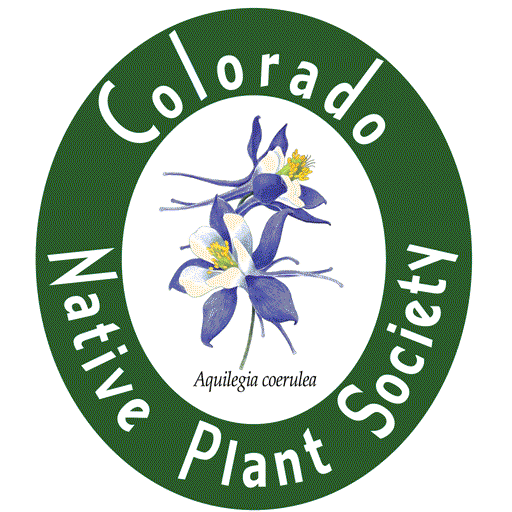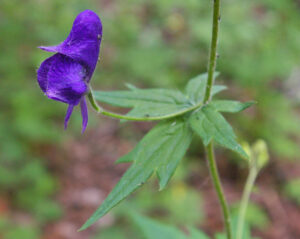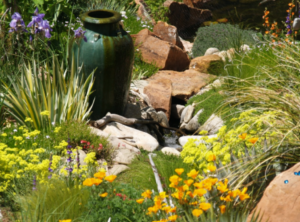


Gardening with Native Plants
What exactly is a Native Plant?
What exactly is a native plant?
Or a local ecotype, a cultivar, an introduced species?
Find out using this PDF: Defining a Native Plant
Why garden with Natives?
Why garden with native plants? Because Colorado natives have thrived here for thousands of years. They are perfectly adapted to deal with Colorado’s
- Climate
- Soil types
- Pests and diseases
- Water, or lack of water
This means your garden will have reduced needs for maintenance, fertilizer, watering, and pesticide use. And perhaps even more importantly, your garden will be attracting the native birds and butterflies everyone loves to watch, and it will also be supporting the larger natural ecosystem you live in. Isn’t it wonderful that every gardener can make a beneficial contribution by choosing native plants when there are so many challenges to our environment today? And one more thing – native plants are beautiful!
Native plants are at the heart of the whole matter. As you probably know, plants form the foundation of food webs, they are the first converters of the sun’s power into sugars which are then used for food and energy by all terrestrial organisms, including us. Our native plants that have co-evolved in Colorado alongside each other and all the other living creatures here. Animals, insects, fungi, and myriad life forms we are only now discovering, have learned to grow and support each other living in Colorado’s unique conditions.
Our climate, weather patterns, water supply, soils, and widely ranging elevations present significant challenges. Native plants have learned to thrive in these harsh conditions by supporting each other, and keeping the checks and balances on growth that allow for wide biodiversity. In addition to their developed resistance to pests and diseases, we now know that many native plants are sending signals to each other to warn and defend against potential harms.
Native plants in Colorado provide a lifeline to our wildlife. Birds, fish, mammals, and pollinators all have specific needs our native plants provide.
The timing of bloom, leaf, and seed; the nutritional content of each plant, and its ability to grow in a certain place; these are critical factors to survival for the animals that depend on them.
Scientific advances have given rise to an exploding new awareness of the highly specialized relationships between pollinators and plants. Our native plants produce or sustain the right kind of food at the right time for the animals that live in or migrate through Colorado.
Clear air, clean water, protection from erosion and floods, and healthy soil are all ecosystem services provided by plants.
In Colorado, it’s our native plants that deliver these services in the most efficient and robust way. Just one example is our water supply, which comes in large part from the snowpack of our freezing, short-growing-season, windblown, alpine mountains. What holds the soil in place and helps it act as sponge to retain moisture, allowing it to be released slowly to the thirsty downslope areas in summer? Native plants that can cope with the extreme conditions up there!
Plants that are not native to Colorado have not evolved with our native birds and pollinators and do not play as important roles in our local ecosystems as native plants. For instance research has clearly demonstrated that non-native wildflowers cannot transmit those chemical messages that warn neighboring plants of potential threats.
Most native bees require a particular native plant or native plant family to make the only food source their offspring can eat. The larvae of many butterflies also need particular native plants to eat. Many people are familiar with the plight of the monarch butterfly, whose larvae must have milkweed. But monarchs are only one of many butterflies with that very specific need. Plants from other places cannot fill the bill, and some of them have destroyed our native plant communities, creating monoculture dead zones. Non-natives in Colorado do not have the natural checks and balances here that kept the equilibrium intact in their own native spaces.
Human consumption of space for development has destroyed and fragmented such large amounts of land – only five percent of land in the lower forty-eight states is even close to being in self-sustaining ecological condition. Our gardens and landscapes comprise a significant amount of land. By using native plants in them, we can be proactive stewards of our only planet.
Read more about introduced plants.
Highly recommended for more reading:
- Nature’s Best Hope by Doug Tallamy
Read a review here: Nature’s Best Hope Book Review
Purchase the book from our bookstore click here.
Sue Dingwell
A four minute video by Tallamy explaining why native plants are so important.
Low Water Native Plants by Region: Brochures to Download
Choose plants native your region. Free brochures featuring natives with low water-high success rates and information about sun/shade preference, size, bloom time, plus common and scientific names.
Click here to download
Low-Water Natives Plant for Colorado Gardens
appropriate for your landscape
Where to Buy Native Plants
This downloadable PDF lists nurseries and other vendors that sell all or mainly native plants or seeds. CoNPS also sponsors a big sale each spring.
Native Plant Vendor List
Planting for Pollinators
Successful planting for pollinators and pollinator conservation will include:
- Many native local eco-type plants – plants local to your area.
- Layers that provide food and protection starting from the ground up: grasses and flowers at the bottom, shrubs for the mid level, then trees.
- Plants with a variety of bloom times to provide a food source over the entire growing season.
Download this free guide: 10 Steps to a Pollinator Garden, written by our CoNPS Secretary who also happens to be the Horticulture Directorof the Butterfly Pavillion in Denver. Absolutely everything you need to know in a gorgeous PDF brochure. Including how to deal with pests.
A brief, one-page guide, good for handing out at events: Low Water Native Plants for Pollinators
Check out this series of plant-pollinator profiles written by CoNPS member and Native Plant Master, Carol English: Native Plants and Pollinators
Visit our Colorado Pollinator Photo Gallery
Natives Are for the Birds!
Native plants are the clean green solution for giving food to birds in your yard all year long – in spring and summer, nectar and insects; from fall throughout winter, berries, fruits, nuts, and seeds. They also provide natural protection from weather hot and cold, and from predators. And they don’t attract bears or contribute to the spread of bird diseases.
Native plants are especially important to birds in spring when they are raising their babies. Ninety-six percent of terrestrial birds rear their young on insects, and caterpillars are a particularly important food source.
“Field researchers have watched bobolinks bring food to their nests 840 times a day for ten days in a row. Sapsuckeers feed their nestlings 4260 times, downy weedpeckers 4095. times, and hairy woodpeckers 2325 tiimes.”
Nature’s Best Hope, Tallamy, 2019
Where did those insect food sources, mainly caterpillars, come from? What is feeding them? Native plants. Which are sustaining the insects at exactly the time the birds need them. It’s a finely tuned web of interdependence.
HOW TO ATTRACT BIRDS
Please Don't Plant These!
Here is the link for a PDF that list plants to avoid:
Please Don’t Plant These!
Not all non-native plants are harmful to the Colorado environment, but some of them are very destructive.
Plants on this list can easily escape garden settings and cause eradication or disruption of our native plant comunitties. This list lets you know which plants should be avoided and also gives you options for native ‘lookalikes’ that make good choices for your beautiful garden! Follow the link above to see the list.
Citizen Science: Project Budburst
Citizen science is something everyone can do! It’s a collaboration between scientists and those who are just curious or concerned and are motivated to make a difference by lending more eyes and ears to research in order to increase scientific knowledge. Through citizen science, people share and contribute to data monitoring and collection programs. Smart phones and cameras are typical tools, some projects have just a few people, some have millions! CoNPS members participate in many citizen science projects including Project Budburst and iNaturalist. Learn more on our page for:
Citizen Science
Certified Native Garden
The Certified Native Plant Garden & Landscape Program is a great way to show your friends and neighbors the many benefits of using native plants! The application process is intended to encourage and support adherents to gardening and landscaping with native plants, whether they have beginning, advanced or anywhere-in-between knowledge of native plants.
The Certified Native Plant Garden & Landscape Evaluation Rubric can be viewed by anyone and lays out the criteria used to decide certification, and the Silver and Gold enhanced certifications. The Certified Program Application is designed to help you inventory, understand and plan even better use of native plants in your garden or landscape. Applying to the Certified Program can be part of the journey to deeper knowledge about native plants, so don’t worry, you can save and return to your application if needed!


